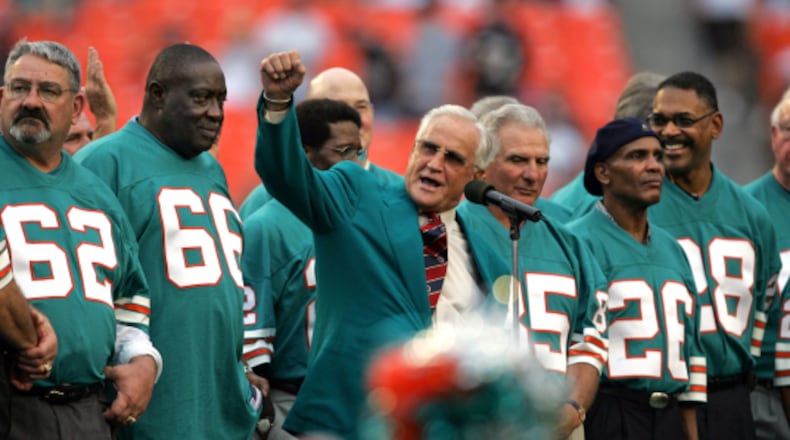Ninety-nine percent of brains donated by families of former NFL players tested positive for signs of chronic traumatic encephalopathy (CTE), according to a study published Tuesday by researchers at Boston University School of Medicine and the VA Boston Healthcare System.
In the largest CTE case series ever published, 111 brains of former players who played on the highest professional level— the NFL— only one brain was not diagnosed with CTE.
The family of the NFL player's brain that was not diagnosed with CTE did not authorize identification in the report.
Out of the former players who were diagnosed with CTE, the test group contained 44 linemen, 20 running backs, 17 defensive backs, 13 linebackers, seven quarterbacks, five wide receivers, two tight ends, one place kicker and one punter.
In the 202 total brains belonging to men who played football on all levels, researchers found CTE in 177. Out of the 14 brains of men who only reached the high school football level, three brains were diagnosed with CTE. Forty-eight of 53 brains belonging to men who stopped playing football after the college level also were also diagnosed with CTE.
“To me, it’s very concerning that we have college-level players who have severe CTE who did not go on to play professionally,” neuropathologist Ann McKee said. “That means they most likely retired before the age of 25 and we still are seeing in some of those individuals very severe repercussions.”
Eight of the former players passed away when they were aged 40 or younger, 44 died between the ages of 41 and 69 and 58 of the former players died at the age of 70 or older, according to the study.
While the study wasn’t focused on the cause of CTE, McKee said the study provided “overwhelming” proof that CTE was linked to football.
“Obviously, this doesn’t represent the prevalence in the general population, but the fact that we’ve been able to gather this high a number of cases in such a short period of time says that this disease is not uncommon,” McKee said. “In fact, I think it’s much more common than we currently realize. And more importantly, this is a problem in football that we need to address and we need to address now in order to bring some hope and optimism to football players.”
McKee, who is credited with many high-profile CTE diagnoses, according to the Washington Post, said the study may not accurately resemble the population of men who played football because the brains that were studied were likely donated by concerned families.
“The whole point is to advance and accelerate our knowledge of CTE in order to aid the living people who are at risk for it or who have it,” McKee said.
The NFL responded to the study on Tuesday afternoon in a statement that read in part, “Case studies such as those compiled in this updated paper are important to further advancing the science and progress related to head trauma. The medical and scientific communities will benefit from this publication and the NFL will continue to work with a wide range of experts to improve the health of current and former NFL athletes... The NFL is committed to supporting scientific research into CTE and advancing progress in the prevention and treatment of head injuries.”
About the Author
Keep Reading
The Latest
Featured


